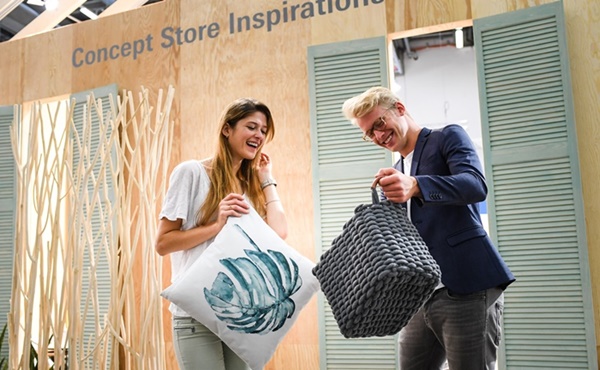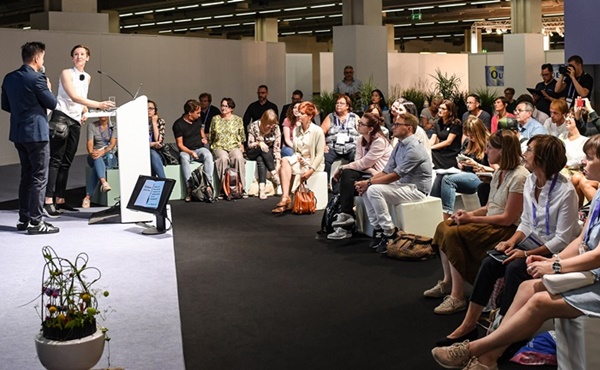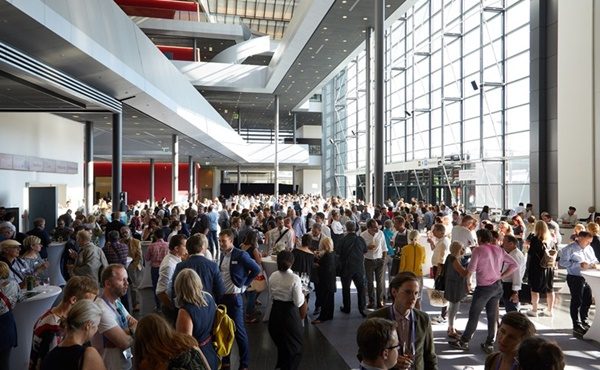Thanks to the digital revolution, trade fairs are no longer the place where writing and placing orders are the main objective for the show.
In today’s climate, trade fairs are moving more towards forming sustainable networks, building long-term partnerships while still checking out all the new products and trends.
Visitors are of course continuing to place orders, but they are increasingly doing so just after the trade fair.
It used to be possible to judge the outcome of a trade fair by the revenue that had been generated by the end of the last day, however, this is no longer possible with today’s trade fairs, says Heinz J. Saller, CEO of homewares & gift wholesaler, Casablanca Bocholt.

“In addition to direct orders, there is now a major emphasis on the quantity and quality of visitors and of the conversations with them,” he explains.
“The ordering patterns of visitors have changed, and today’s trade fairs also provide information about market developments as well as opportunities for a professional exchange of ideas with exhibitors and with other trade fair visitors.
“More than ever before, orders are placed at a later stage, either via a B2B shop, through the sales force or in the showroom. Yet a visit to a trade fair will continue to be indispensable for retailers―especially in the face of e-business and changes in the market. Merchandise presentations, special displays, the touch and feel of products, an overview of thousands of items and a vast variety of trends are things which can only be experienced properly in real life,” he adds.
Over the last few years, event formats have evolved away from traditional order trade shows and are turning into industry events. As well as innovative products and creative inspiration, visitors can enjoy a varied complementary program that is geared towards their needs including seminars, workshops and retail forums.

This August, the AGHA Melbourne Gift Fair will feature workshops centric to retail needs, while Reed Gift Fairs Melbourne August will have its Retail Therapy workshops and Retail Activator Pod.
In Europe, German based consumer goods fair, Tendence, has expanded its offering to include Tendence Academy in addition to its other events such as Talents, the Concept Store, the Village, and Paper & Friends―all of which help to create a positive experience of the trade fair.
With the recent change in order patterns, it is also introducing digital marketplace Nextrade. Nextrade is a standardised digital order and data management tool for suppliers and retailers within a single system. Orders can be placed 24/7, and suppliers keep the details of their products up-to-date via a webshop of their own.
The transformation in the trade fair business has also been noticed by Jan Philippi, owner of home accessories brand Philippi, who says they will continue to exhibit at trade fairs as it is still the best platform for talking to customers.

“It gives us important feedback on our product range, and it enables us to strengthen relationships with customers and, above all, to acquire new ones,” he says.
“Over the past 20 years, the order business has changed considerably. Consultancy and presentation have been gaining in significance, and it’s important to keep offering new things to customers and even give them a surprise from time to time. There’s a great deal of competition, and we want to stand out from the crowd.”
But the change in order patterns is not just a matter of timing. Sustainability and quality are getting increasingly important for buyers.
“Our customers’ ordering patterns have changed, and specialist retailers are now buying from sustainable high-quality manufacturers again,” explains Michael Rossmann from Pad Home Design Concept.

“Customers are looking for brand manufacturers who are familiar with their industries and their product portfolios, and so they now tend to avoid general suppliers who import Asian mass products of relatively unspectacular quality and which offer a bit of everything.
“The current trend goes very much in the direction of quality and fair trade. The end user prefers to buy fewer items, but wants to have products which are special, environmentally sustainable products, in particular. As well as selling Good Weave and ecotex-certified products, Pad acts as a trend maker in the market, offering up to 70 per cent new products, particularly at the start of each season.
“The merchandise does of course need to fit into the prevailing trend, but it’s equally important that products such as cushions and blankets can be touched and felt, and so an autumn trade fair such as Tendence is indispensable for us. We work in a wonderful industry that impacts every single end user on a daily basis. This starts the moment they get up and touch a towel―something which they take just as much for granted as the water that comes out of the shower. I see it as a gift in my personal daily life that I can add value to everyday life through sustainable quality and individual lifestyle.”
By Marion Gerritsen







